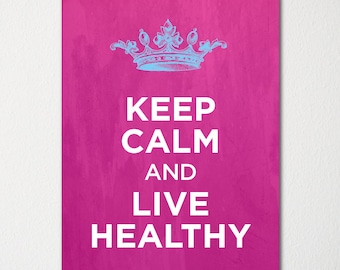The Human Digestive system is a very complex system. It involves many organs to turn what we consume into nutrients. Digestion is the simple brake down of foods.
The digestive track consists of:
- Liver – main role to produce bile to digest and absorbs fats.
- Pancreas – mixture of digestive enzymes to digest carbohydrates, protein and fats
- Gallbladder- stores bile to brake down fats
- Mouth—chewing starts the brake down of foods
- Esophagus—tube connecting mouth to stomach.
- Stomach—where the action really takes place. Digestion of protein starts.
- Small intestine— where the absorption of nutrients take place
- Large intestine – water is absorbed, feces are formed
- Rectum and anus – storage and disposal of waste
The liver, pancreas and gallbladder I refer to them as accessory organs because they lie outside the digestive track. Each of these organs plays an important role in the absorption of nutrients and removal of waste in our bodies.
Carbohydrates (Glucose)
 The process of carbohydrates starts at the mouth—salivary glands moisten the food and the enzyme Amylase is release to brake down sugar. Once the food is chewed into smaller pieces it moves down the esophagus to the stomach. Once in the stomach it becomes chyme (partially digested food). From the stomach it enters the small intestine where digestive enzymes secreted from the pancreas continue to brake down the sugar. These small sugar units can now be absorbed through the intestinal walls into the liver and turned into glucose. The glucose is passed from the liver through the bloodstream to the body. Once the pancreas detects the glucose in the bloodstream they will release insulin. The excess glucose along with fiber and waste will move on to your large intestine, where it will eventually be eliminated. The majority of the digestion of carbohydrates takes place in the small intestine.
The process of carbohydrates starts at the mouth—salivary glands moisten the food and the enzyme Amylase is release to brake down sugar. Once the food is chewed into smaller pieces it moves down the esophagus to the stomach. Once in the stomach it becomes chyme (partially digested food). From the stomach it enters the small intestine where digestive enzymes secreted from the pancreas continue to brake down the sugar. These small sugar units can now be absorbed through the intestinal walls into the liver and turned into glucose. The glucose is passed from the liver through the bloodstream to the body. Once the pancreas detects the glucose in the bloodstream they will release insulin. The excess glucose along with fiber and waste will move on to your large intestine, where it will eventually be eliminated. The majority of the digestion of carbohydrates takes place in the small intestine.
Protein (Amino Acids)
 Protein digestion also starts in the mouth by chewing, where the food is broken down into smaller pieces. The food will travel to the stomach, where most of the brake down of protein takes place. The stomach releases hydrochloric acid and protease enzymes needed to digest protein. The pancreas release enzymes (trypsin) into the smaller intestine. The food will stay in the stomach for about 2 – 6 hours. Once the protein molecules are disintegrated into amino acids they are ready to pass to the bloodstream through the intestinal walls.
Protein digestion also starts in the mouth by chewing, where the food is broken down into smaller pieces. The food will travel to the stomach, where most of the brake down of protein takes place. The stomach releases hydrochloric acid and protease enzymes needed to digest protein. The pancreas release enzymes (trypsin) into the smaller intestine. The food will stay in the stomach for about 2 – 6 hours. Once the protein molecules are disintegrated into amino acids they are ready to pass to the bloodstream through the intestinal walls.
Fats (Fatty Acids)
References:
National Digestive Diseases Information Clearinghouse/National Institute of Diabetes and Digestive and Kidney Diseases. The Digestive System and How It Works retrieved on Oct 2014 from http://digestive.niddk.nih.gov/ddiseases/pubs/yrdd/ .
Merck Manual Home Health Handbook. Overview of the Digestive System retrieved on Oct 2014 from http://www.merckmanuals.com/home/digestive_disorders/biology_of_the_digestive_system/overview_of_the_digestive_system.html?qt=digestive&alt=sh
Sizer, F., & Whitney, E. (2013). Nutrition Concepts and Controversies (13th ed.). Wadsworth Cengage Learning
National Digestive Diseases Information Clearinghouse/National Institute of Diabetes and Digestive and Kidney Diseases. The Digestive System and How It Works retrieved on Oct 2014 from http://digestive.niddk.nih.gov/ddiseases/pubs/yrdd/ .
Merck Manual Home Health Handbook. Overview of the Digestive System retrieved on Oct 2014 from http://www.merckmanuals.com/home/digestive_disorders/biology_of_the_digestive_system/overview_of_the_digestive_system.html?qt=digestive&alt=sh
Sizer, F., & Whitney, E. (2013). Nutrition Concepts and Controversies (13th ed.). Wadsworth Cengage Learning







